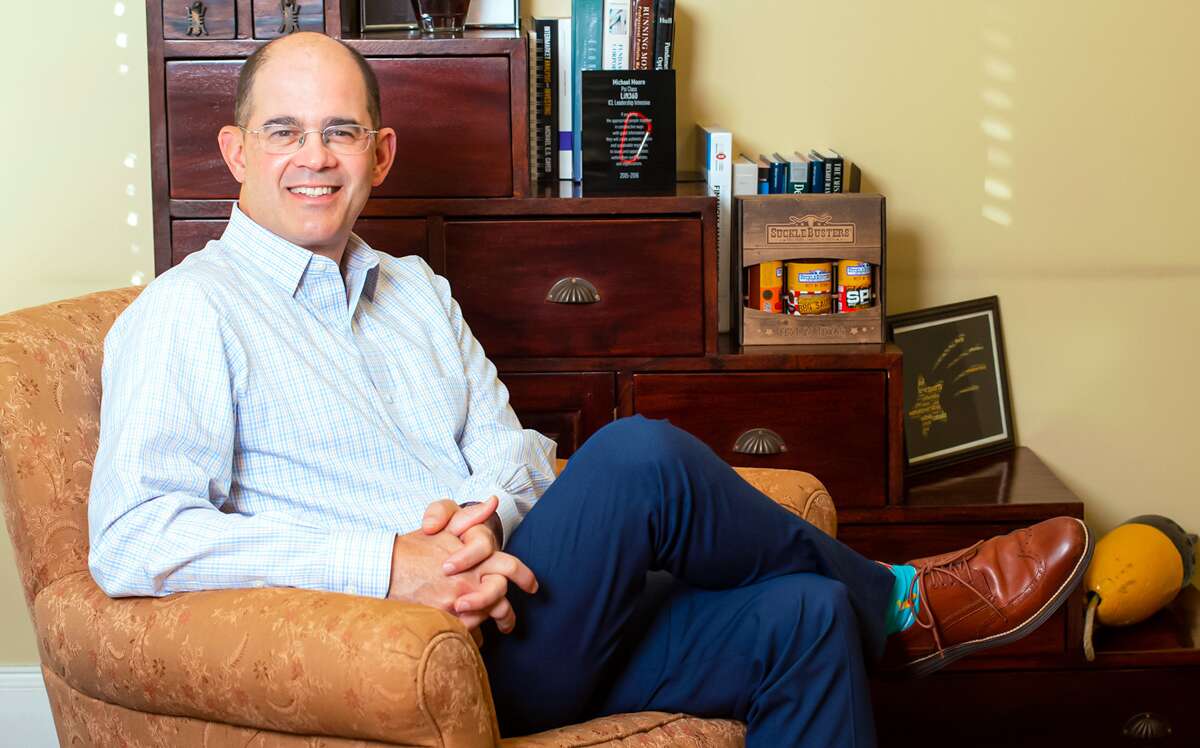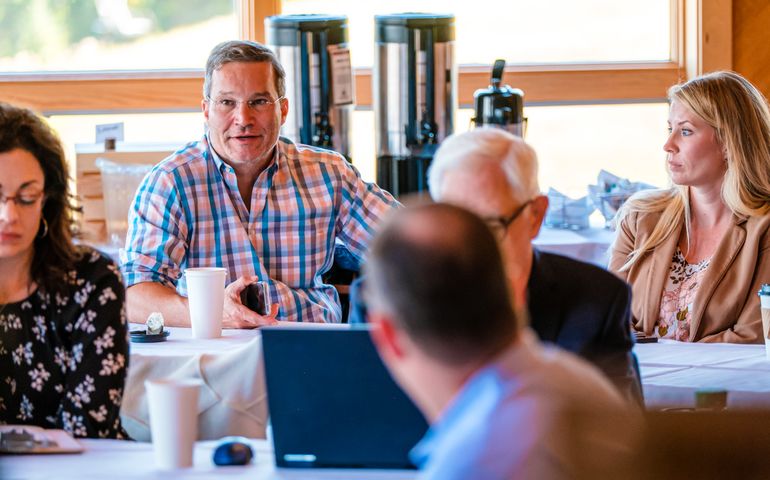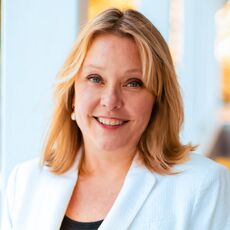
Doing well by doing good: Investors seek returns that are more than financial
 Photo / Courtesy of Maine Mountain Media
Jonathan Tower, Arctaris Impact Fund LP co-founder and managing director, says bringing a business lens to community challenges creates efficiencies.
Photo / Courtesy of Maine Mountain Media
Jonathan Tower, Arctaris Impact Fund LP co-founder and managing director, says bringing a business lens to community challenges creates efficiencies.
When Arctaris Impact Fund LP bought Saddleback Mountain in 2020, the Boston-based investment firm had a vision not only to upgrade and reopen the Rangeley ski resort, but to do so in a way that helps solve for the community and economic development challenges in the region.
“We look for projects where we can make a significant difference for underserved communities and individuals,” says Jonathan Tower, Arctaris’s co-founder and managing director. “We look at these projects with a ‘but-for’ lens, which means — but for this type of capital, this project would not come to fruition.”
Aligning with values
That “but for” idea is part of a growing trend among investors who are looking to do good while earning a financial return.
The idea has many names — including “sustainable investment,” “impact investment,” “values-based investment” and “environmental, social and governance (ESG) integration” — each with slightly different parameters.
But in general, it can be said that interest in sustainable investing has accelerated over the last decade.
“It’s similar to consumers choosing where to shop,” says Michael Moore, a senior advisor and chief investment officer with Bigelow Investment Advisors in Portland. “Where do you want to spend your money? It’s that same sort of desire, to say, ‘How do I want to invest my money? I want to align that more with my values.’”
Spectrum of goals
When thinking about standard investment, all investors have preferences that define, for example, how much risk they’re willing to take, what type of return they want to get and the length of their investment horizon.
“No matter what type of investment approach you have or what investment style you have, those are common elements in any sort of investment analysis,” says Moore.

Sustainable investing goes further, integrating a spectrum of goals defined by the investor’s personal philosophy.
Broadly speaking, says Moore, those goals fall into three categories:
- Values-based investment is rooted in an organization’s or individual’s ethical values and has less to do with financial return than with the fulfillment of a mission based on ethical, religious, environmental, social or other values-based convictions. Investors might avoid companies that conflict with their convictions. “It’s probably the oldest type of sustainable or responsible investing,” says Moore. “It remains prevalent.”
- Impact investing is commonly defined as generating a positive, social or environmental outcome, in addition to a financial return. The desired outcome is stated up front. An example might be an investor intent on expanding broadband availability in Maine. “The key is that the impact is measurable,” says Moore. “Without this investment, only X percent would have broadband. After the investment, a higher percentage will have broadband access. And there’s also a financial return. Some investors might be willing to take a lower financial return because they value this other specific, measureable, positive social outcome. Others might say they want to get a financial return in line with the market.”
- ESG integration incorporates environmental, social and governance issues into an investment’s risk and return analysis. ESG integration begins with the review and relative rankings of dozens of key indicators related to business performance, such as product quality, labor practices and environmental issues — data that probably haven’t been part of investment analyses in the past. ESG investments are viewed as strong prospects for both financial performance and positive change.
Growing interest
At Bigelow, the ratio of customers engaged in ESG, values-based and impact investment has grown over the past decade.
“I think there’s a growing desire among investors to have their portfolio align with their interests,” says Moore. “They know there are these big issues out there, and they want to know that these issues are reflected in your analysis.”
Tower agrees.
“Ranging from billionaire tech entrepreneurs who are giving 99% of their money away, to philanthropy, to young individuals who might be coming into money for the first time and want to make sure that they are using their resources to help others, there’s greater awareness today of impact investing,” says Tower. “We can’t rely on government alone to solve community challenges, and we can’t rely on philanthropy either. Bringing the rigor of a business lens to these types of decisions creates a lot of efficiency and the ability to do it again and again and again.”
At Arctaris, investors come in with a range of motivations and return profiles. The firm’s blended fund structure combines capital from charitable foundation and government agencies that are willing to accept lower returns and, often, higher risks, with capital from primarily commercial banks and insurance companies that typically seek higher but still moderate returns plus community benefits.
Developing partnerships
With 20 years of experience investing in private equity and private debt, Tower co-founded Arctaris in 2009 with a mission to invest in growth-oriented operating businesses and community infrastructure projects in underserved communities, including Opportunity Zones, inner cities and targeted rural communities throughout the U.S. The goal is to deliver above-market investment returns alongside positive social impact.
Tower saw that opportunity at Saddleback. Maine’s third-largest ski resort had been closed for five years, idling critical infrastructure that supported winter employment.
Arctaris’ goal has been to create an environment that attracts workers back to the region.
That didn’t just mean investment in techno-goodies such as a new high-speed quad lift. It meant developing partnerships with the broader community and with local, state and federal entities, and putting money toward affordable housing, affordable day care and health benefits.
“Arctaris frequently creates partnerships with foundations and government agencies, and then uses its own capital to achieve things that would have otherwise been relatively impossible,” says Tower.
The process includes working closely with communities — an element considered essential to the success of an investment.
“We don’t show up and produce a list of things the community needs to do to be successful,” he continues. “We engage with the local community. We listen to elected leaders, to nonprofit organizations, to business leaders, and we help jointly form a plan.”
That plan includes construction of affordable staff housing and a partnership with Rangeley Region Health & Wellness to establish a childcare center for Saddleback employees and the larger community. Arctaris is also working with the Maine Broadband Coalition to bring high-speed internet to various underserved Maine communities.
“With impact investing, we’re all aiming to do good and do well at the same time,” says Tower. “The nice thing about impact investing is that it draws people who have had a lot of success in their finance or investment careers and now want to give back to their communities by leveraging their skill sets, their experience and their relationships.”
‘What more can I do?’
“When we look at the crises all around us, current events have people thinking, ‘What more can I do?’” says Christen Graham, founder of North Yarmouth social impact consulting firm Giving Strong and an inaugural steering committee member of nonprofit women’s investment campaign Invest for Better.
Generally, says Graham, there’s a growing awareness — not only of the power of investing, but of the possibility to become an investor.

“Women in general struggle with this,” she says. “’I’m a business owner, I’m a mom, I’m a bicycle rider.’ I have to start thinking, ‘I’m also an investor.’ Once you do that, you start to become active and not passive.”
“Know what you own” is a phrase common among impact investors, she says.
“But that should be for every investor,” she continues. “If I’m putting all this money into some kind of account, shouldn’t I know what that is and that it’s not hurting anyone? That awareness is growing. Once you know what you own, you say, ‘How do I feel about that?’ Then you can be intentional about what more you can be doing with your money. It’s very personal and very values-aligned.”
Measuring outcomes
Just as the definitions and categories vary, so also do measures of outcomes.
“There’s no standard definition for impact investing — that’s the good news and the bad news,” says Graham. “The good news is to say, 'This is what I care about and I can make this investment and see if I can get a return because, for example, I care about preserving Maine’s forests.'”
The bad news is that there’s no single standard for measuring outcomes.
“You can make an impact investment and I’ll make one and our measures of success can be wildly different,” she says.
Work is ongoing to create standards, and individual companies are even coming up with their own — looking at carbon footprint and diversity, for example — in response to growing demand from investors, says Graham.
“Some companies will say, ‘We have zero tolerance for fill-in-the-blank,’” she says. “Companies are still self-reporting and there’s no one mandated reporting schedule. It would be great if the markets required that.”
Deeper conversations
All in all, in this heightened arena, conversations can be meaningful.
“It’s one thing when you’re discussing a client’s financial goals,” says Moore. “That’s one level of conversation you have, to make sure their needs are met. But it’s a whole different relationship when you ask, ‘What’s important to you? Are there any values or conviction concerns you have, anything we should be aware of to make sure they’re reflected in your investment?’ That’s a deeper, richer conversation.”










0 Comments